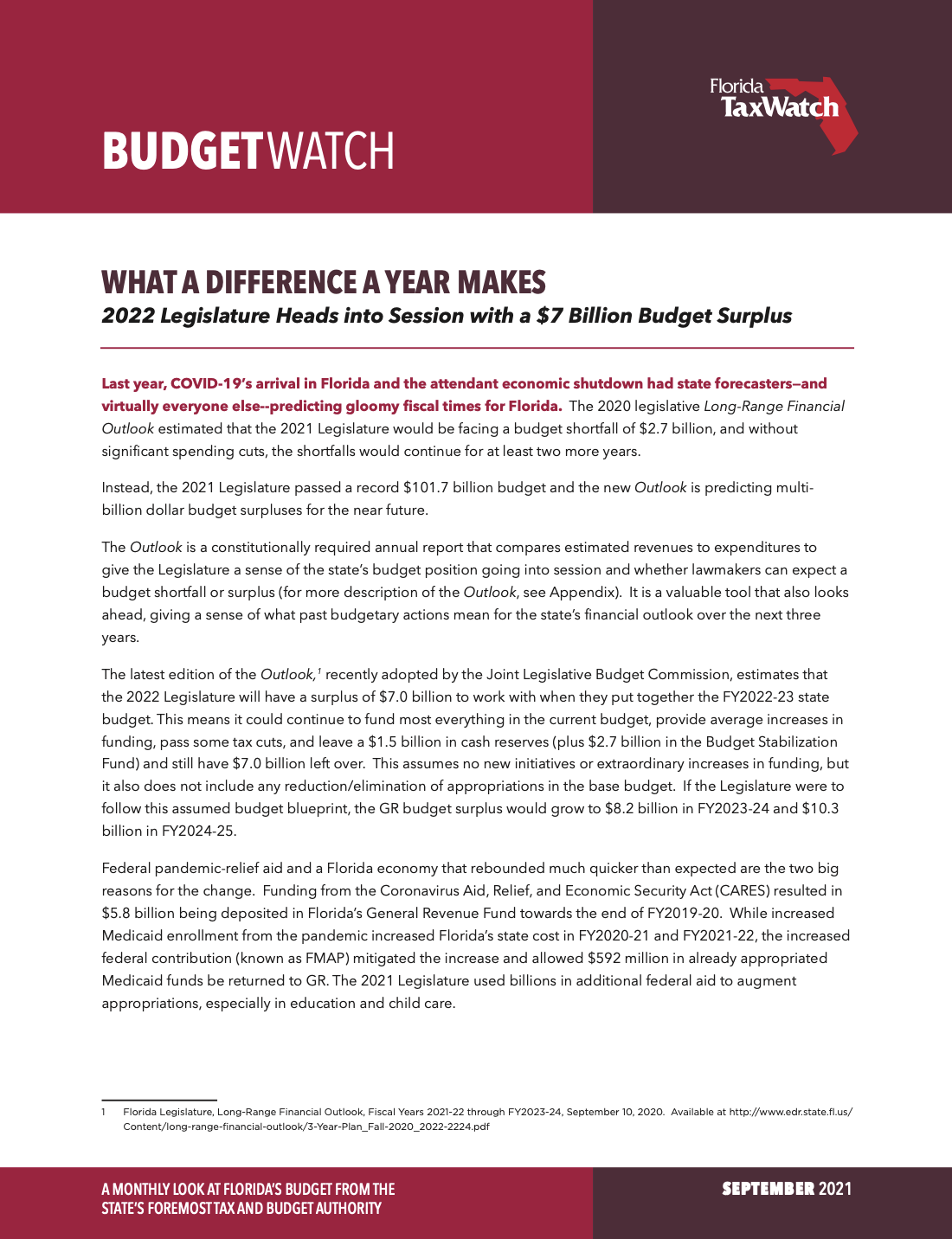Budget Watch - What a Difference a Year Makes
2022 Legislature Heads into Session with a $7 Billion Budget Surplus

Last year, COVID-19’s arrival in Florida and the attendant economic shutdown had state forecasters—and virtually everyone else--predicting gloomy fiscal times for Florida. The 2020 legislative Long-Range Financial Outlook estimated that the 2021 Legislature would be facing a budget shortfall of $2.7 billion, and without significant spending cuts, the shortfalls would continue for at least two more years.
Instead, the 2021 Legislature passed a record $101.7 billion budget and the new Outlook is predicting multi-billion-dollar budget surpluses for the near future.
The Outlook is a constitutionally required annual report that compares estimated revenues to expenditures to give the Legislature a sense of the state’s budget position going into session and whether lawmakers can expect a budget shortfall or surplus (for more description of the Outlook, see Appendix). It is a valuable tool that also looks ahead, giving a sense of what past budgetary actions mean for the state’s financial outlook over the next three years.
The latest edition of the Outlook,1 recently adopted by the Joint Legislative Budget Commission, estimates that the 2022 Legislature will have a surplus of $7.0 billion to work with when they put together the FY2022-23 state budget. This means it could continue to fund most everything in the current budget, provide average increases in funding, pass some tax cuts, and leave $1.5 billion in cash reserves (plus $2.7 billion in the Budget Stabilization Fund) and still have $7.0 billion left over.
It is now estimated that there will be $7.3 billion in unobligated GR remaining at the end of the current budget year. This money will be carried forward into the next year and be available for the 2022 Legislature to use for the FY2022-23 budget. Adding the new revenue estimate results in $45.800 billion in total available GR (see table in report). This surplus does not include additional funds still to come from the American Rescue Plan’s State Fiscal Recovery Fund. The state has received half of its share ($4.408 billion) and the second half is expected later this fiscal year. The Legislature appropriated $5.346 billion3 from the fund in the FY2021-22 General Appropriations Act. This leaves $3.471 billion in unobligated funds that the budget proviso states will be put in GR reserves. This means the true surplus exceeds $10 billion.
What are the Critical Needs and High Priority Needs? Read the report to find out more.